Auto Expo 2023: From Maruti to Toyota, here are all the concepts showcased at the expo
Concept cars are what enthusiasts look forward to at an auto show and the 2023 Auto Expo does not disappoint.
1/9
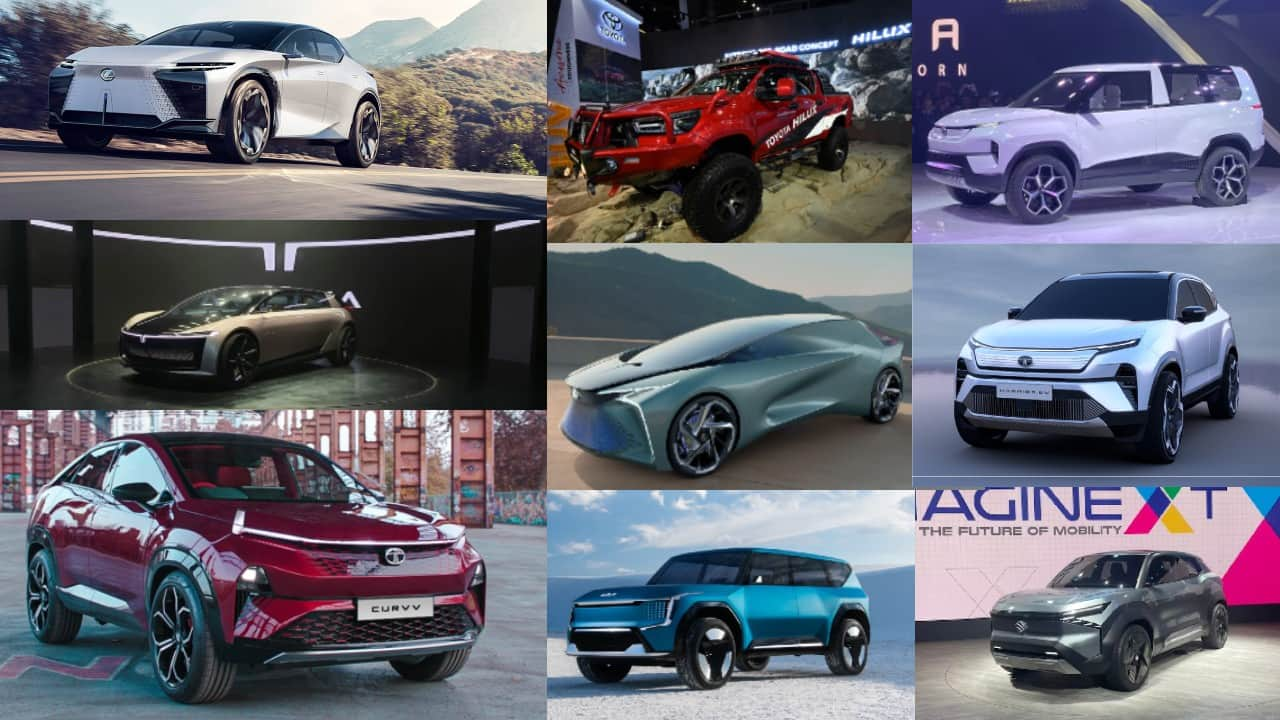
When it comes to expos, auto manufacturers do not just want to showcase what’s coming up the following year. Sometimes, it’s just about showing off. To do this, auto brands give us concepts — designs of what their cars or motorcycles could look like in the future. The most futuristic concepts are the ones where a company doesn’t think about limiting technology, and lets the imagination fly. Nevertheless, the best concepts are the ones we know will make it to the market, maybe not immediately, but eventually. Here are some concepts featured at the 2023 Auto Expo.
2/9
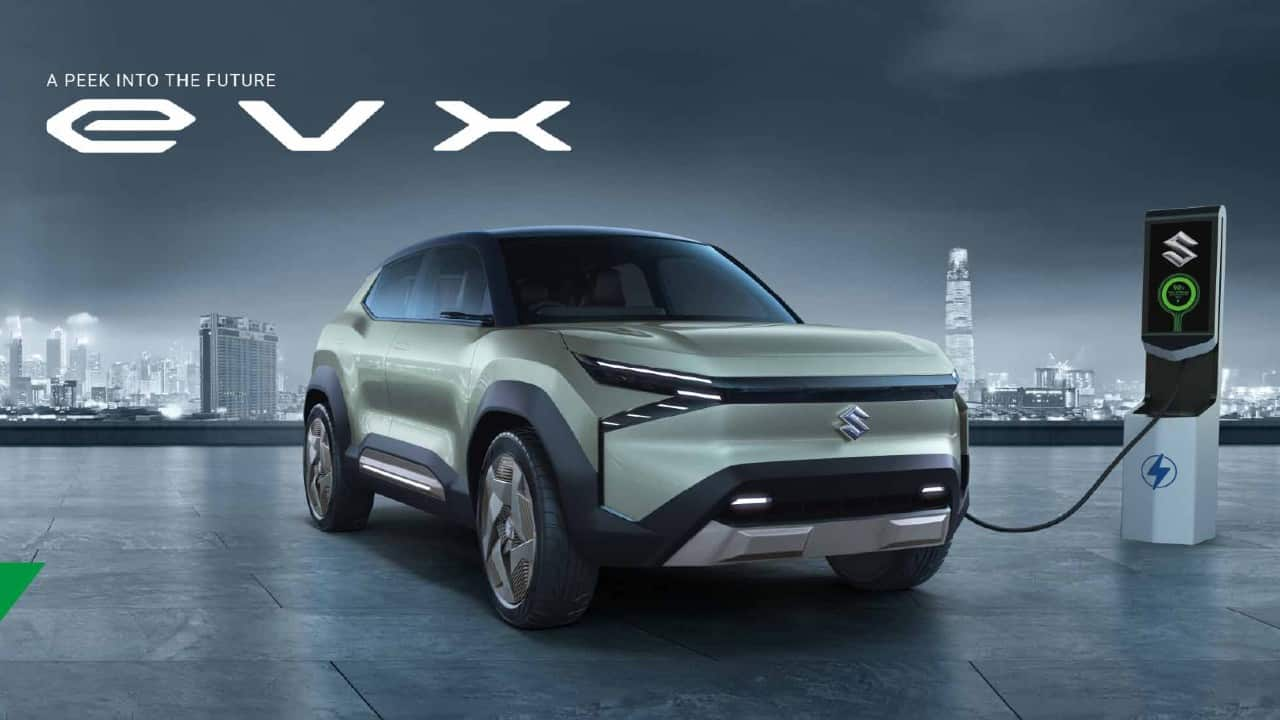
Maruti Suzuki eVX | We start with the big boy of the Indian automobile scene. Maruti Suzuki is perhaps best known for making the most affordable cars in the country thanks to which it is also one of the best-selling manufacturers in both monthly and yearly sales charts. So far, Maruti has stayed away from the electric game. But this year, the Maruti Suzuki stall’s showstopper is the eVX concept. The electric SUV, slated for launch sometime in 2025, will be jointly developed by Maruti as well as Toyota. Maruti hasn’t given out specific details yet, but says the SUV will get a 60 kWh battery pack with the ability to travel 550 km on a single charge. In terms of size, the eVX is 4,300 mm long, 1,800 mm wide and 1,600 mm tall. As far as the design is concerned, the eVX is fairly futuristic with sharp edges and smooth curves all blending together seamlessly. Of course, the SUV is in concept form and will see a few changes by the time it hits the market. (Image: Maruti Suzuki)
3/9
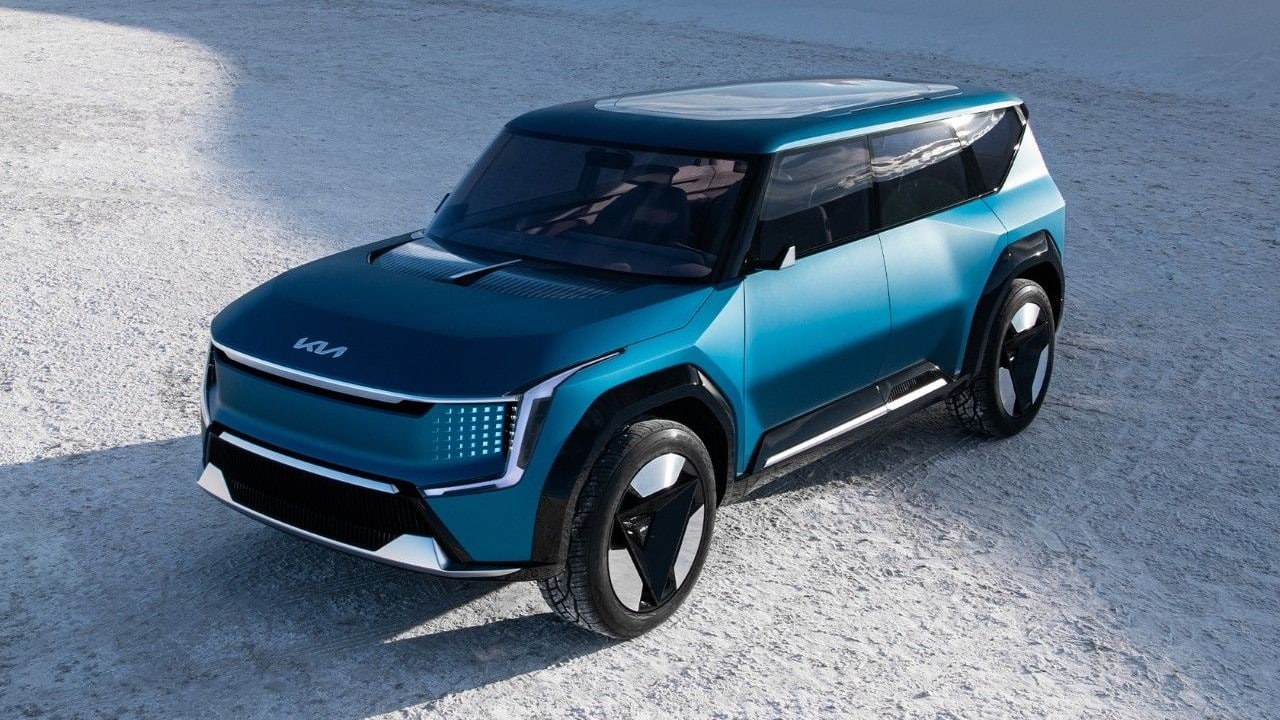
Kia EV9 concept | Korean car brand Kia showcased the EV9 concept alongside the upcoming KA4 (next-gen Carnival). When launched, the EV9 is expected to be Kia’s flagship electric SUV, one that will be large enough to rival the likes of the Range Rover. In terms of design, the EV9 is a rugged looking SUV complete with a boxy silhouette, crisp lines and subtle curves only where needed. The front features an evolved version of their signature tiger nose grille, above which a light bar runs the width of the nose. Half octagons form the wheel arches and the windows are characterised by sharp corners rather than gentle rounded edges. The EV9 will be based on the same E-GMP skateboard architecture as the EV6 hatch, which is already on sale globally. This means oodles of cabin space for people and hopefully a frunk (front trunk) for even more storage space. Now, as Kia puts it, the EV9 is a step towards realising the company’s dream of becoming a sustainable mobility solutions provider. As such, the SUV gets a number of upcycled materials on the interiors, such as recycled fish nets for the flooring and recycled plastic bottles and wool fibres to create the seating fabric. Powertrain specifications could be the same as the EV6, so two battery packs and two electric motor options for a total of four different variants. (Image: Kia)
4/9

Tata Curvv | Tata Motors has been running the show when it comes to Indian made electric vehicles. The Punch EV and the Altroz EV are already in the pipeline, but the Curvv is the company’s talking point. The concept was first unveiled last year and while people are excited to see what the SUV could look like in its production guise, the 2023 Auto Expo showcased the concept again. This time, however, the company said the concept Curvv was the ICE variant of the car. The SUV is expected to go on sale by 2024, ahead of the Sierra, which is further down this list. The design is characterised by sharp lines and a gently raked roof integrating itself into a notchback tail. The Curvv will get both ICE and EV powertrain options, with the ICE versions arriving first. There will be two petrol variants on offer, a 1.5-litre direct injection turbo as well as a smaller new-gen 1.2-litre direct-injection turbo.
5/9
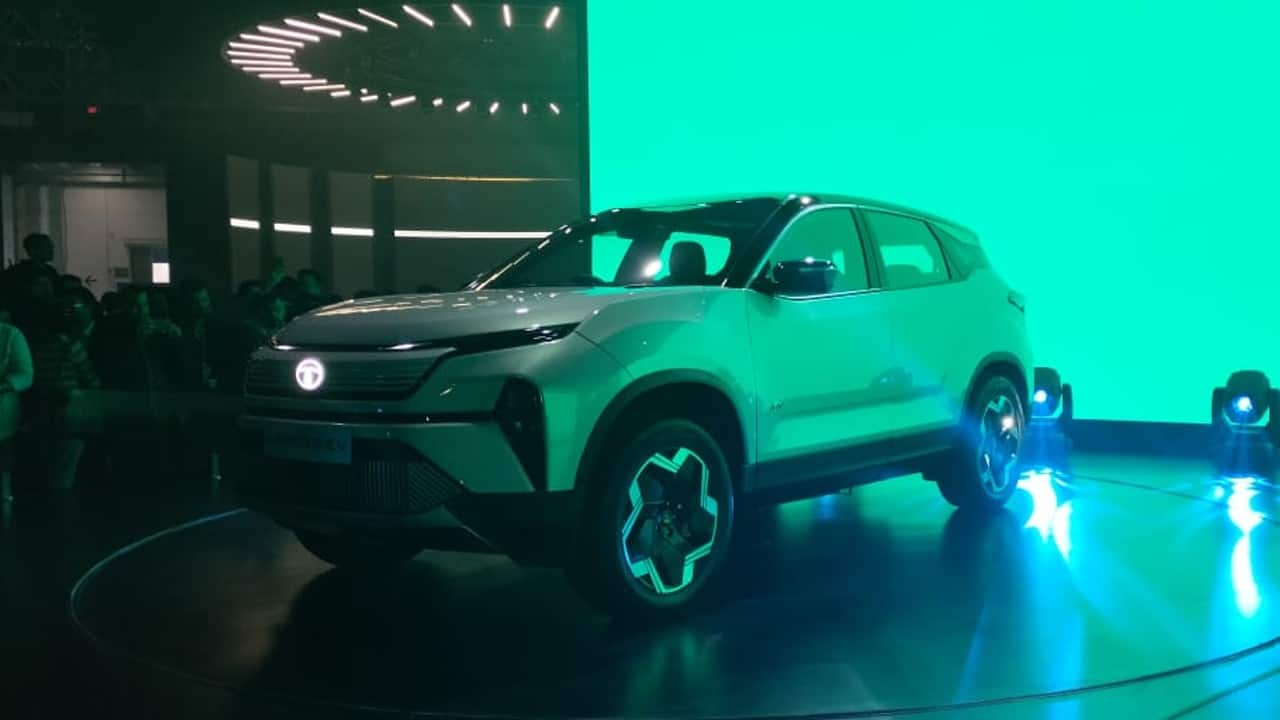
Tata Harrier | Next on Tata’s list is the Harrier, which, like the Curvv, is scheduled for launch later in 2024. This will also be the first time the Harrier is being electrified and we should be able to see the same thing happen to the Safari. As for the Harrier itself, the company says the SUV will be based on the new Gen 2 architecture. Powertrain specifications for the Harrier haven’t been shared, but we can expect something like a 60 kWh battery pack and maybe even two electric motors, making it the first time the Harrier gets an all-wheel-drive. Along with the new powertrain, the harrier also gets some visual changes. Pure EV elements such as a closed-off grille and aero-optimised alloy wheels are the highlights along with the lit-up logo at the front. There are tweaks to the main headlamp units as well that make it look sleeker than the big bold ones on the current generation Harrier. We can also expect features such as vehicle-to-load and vehicle-to-vehicle charging systems.
6/9
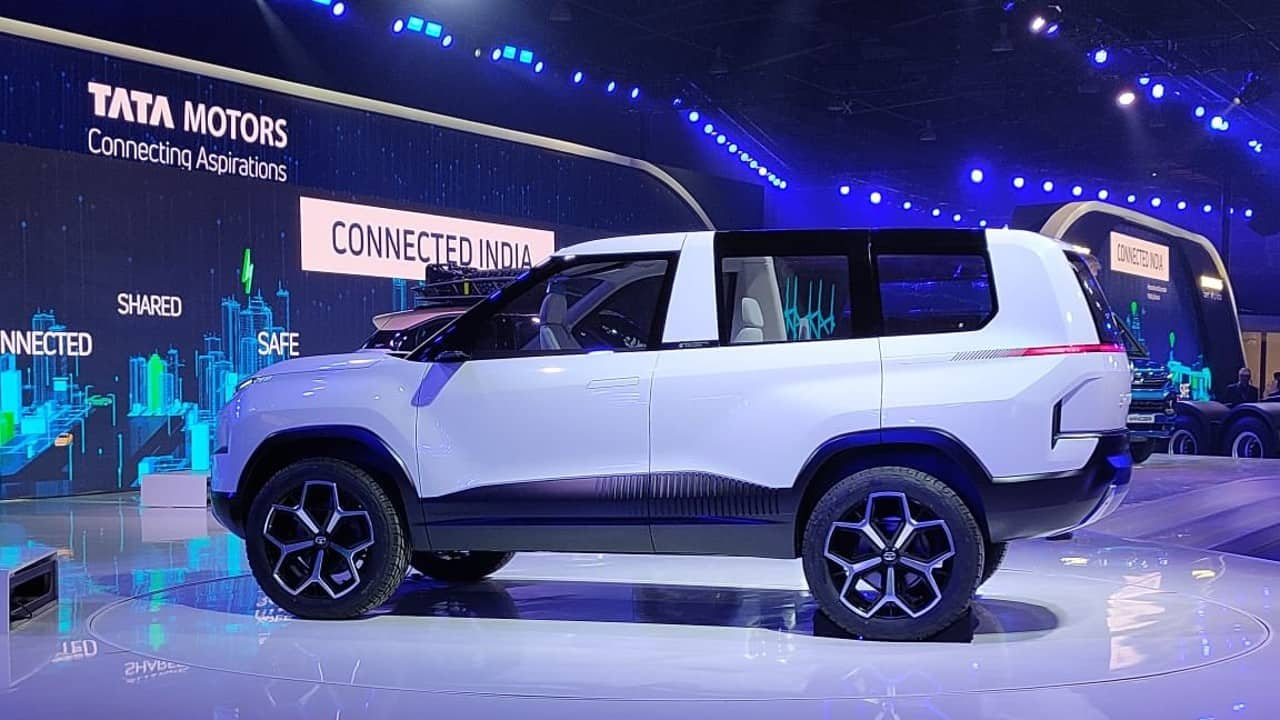
Tata Sierra | The most excitement was generated by the Sierra. First unveiled in its prototype version at the 2020 Auto expo, the Sierra saw a few changes that brought it closer to a production-ready form. Tata Motors has also confirmed that the Sierra will be launching after the Curvv and the Harrier in 2025. The company has managed to stay close to the original design of the Sierra for sentiment’s sake, but at the same time has brought the SUV into the future. It gets a similar large glass house behind the front seats and while there are two more doors for the passengers, the C-pillar has been well-hidden by the glass and black paint. The Sierra, like the Harrier, is based on Gen-2 architecture, a heavily modified version of the ALFA platform. It will get both an EV powertrain as well as internal combustion engine options. These engine options are the same as the ICE variants of the Curvv and the Harrier is expected to produce between 160 and 180 hp of maximum power.
7/9
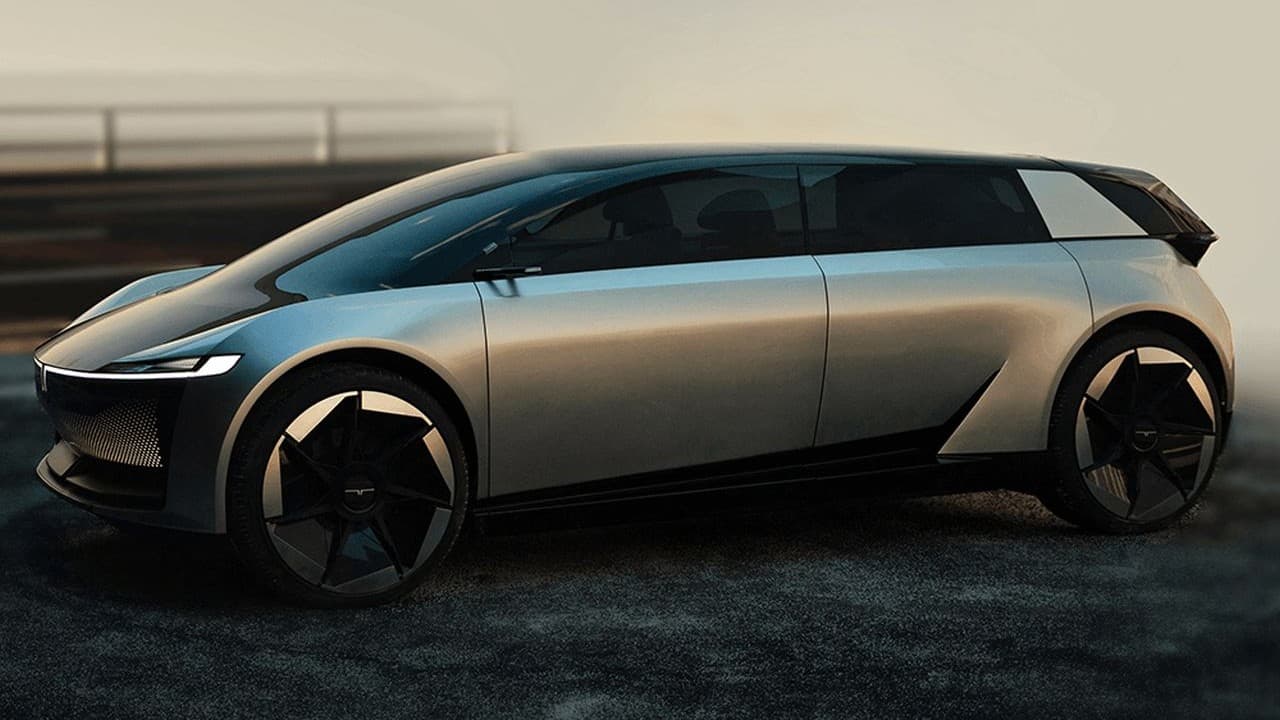
Tata Avinya concept | And finally, Tata’s born electric concept, the Avinya. The Avinya will be based on the company’s Gen 3 architecture, which is a more ground up EV platform, made specifically for electric vehicles. In terms of design, the Avinya looks more like an Estate with long and low body proportions. The axles placed at the extreme ends of the vehicle allow for extremely short front and rear overhangs. The exercise accentuates what an electric vehicle is capable of in terms of cabin space thanks to the skateboard architecture. It allows for spacious room proportions on the inside while still maintaining a futuristic, yet useful design. Other design elements include suicide doors, slim lighting elements and a single bonnet-to-roof glass pane. Now, while such a futuristic design is usually seen as just a concept, Tata has said that the Avinya will go on sale in 2025. So, in terms of design, we will definitely see some changes, such as conventional or even sliding doors in place of suicide ones. Range is claimed to be more than 500 km on a single charge. A big list of changes will be seen in the interiors of the car to make it more accessible and alluring compared to the minimalist design seen on the current concept. The Avinya will also be the first and only Tata car to be offered in pure electric form with no ICE counterparts.
8/9
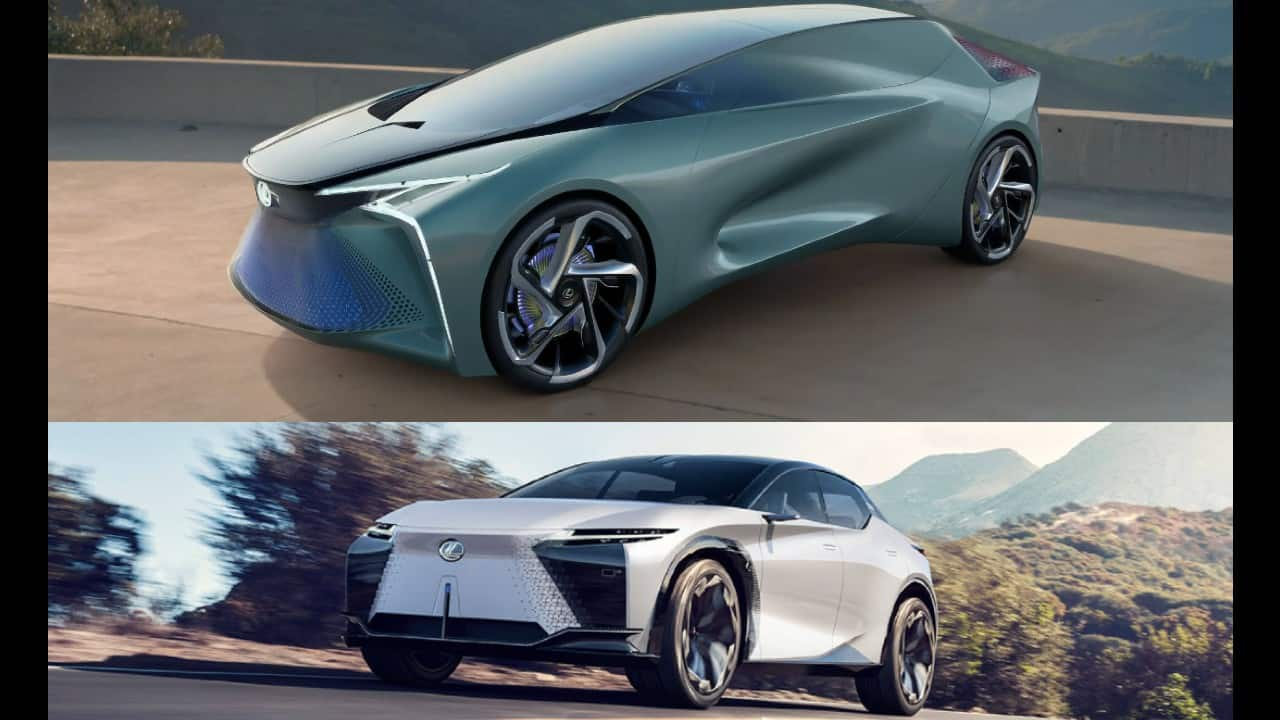
Lexus LF-30 and LF-Z | Lexus showcased two of their concepts at the 2023 Auto Expo, the LF-30 Electrified and the LF-Z Electrified. Starting with the LF-30, the design is as conceptual as it can get. The LF-Z, on the other hand, looks more conventional in terms of design. The inside of both cars, however, is based on the company’s ‘Tazuna’ concept, which focuses separately on the driver and the passenger. The company says this essentially creates a space for the driver to focus solely on the road, with no distractions. The front passenger seat, on the other hand, mimics that of a first-class airplane seat. Audio is provided by a Mark Levinson system and speakers are incorporated into the headrest along with noise cancellation tech. The LF-330 comes with four in-wheel electric motors powered by a 110 kWh battery pack. The claimed range is 500 km on a single charge with wireless charging tech. The LF-Z, on the other hand, gets a 90 kWh battery pack powering a dual motor setup. Range is claimed to be 600 km on a single charge.
9/9
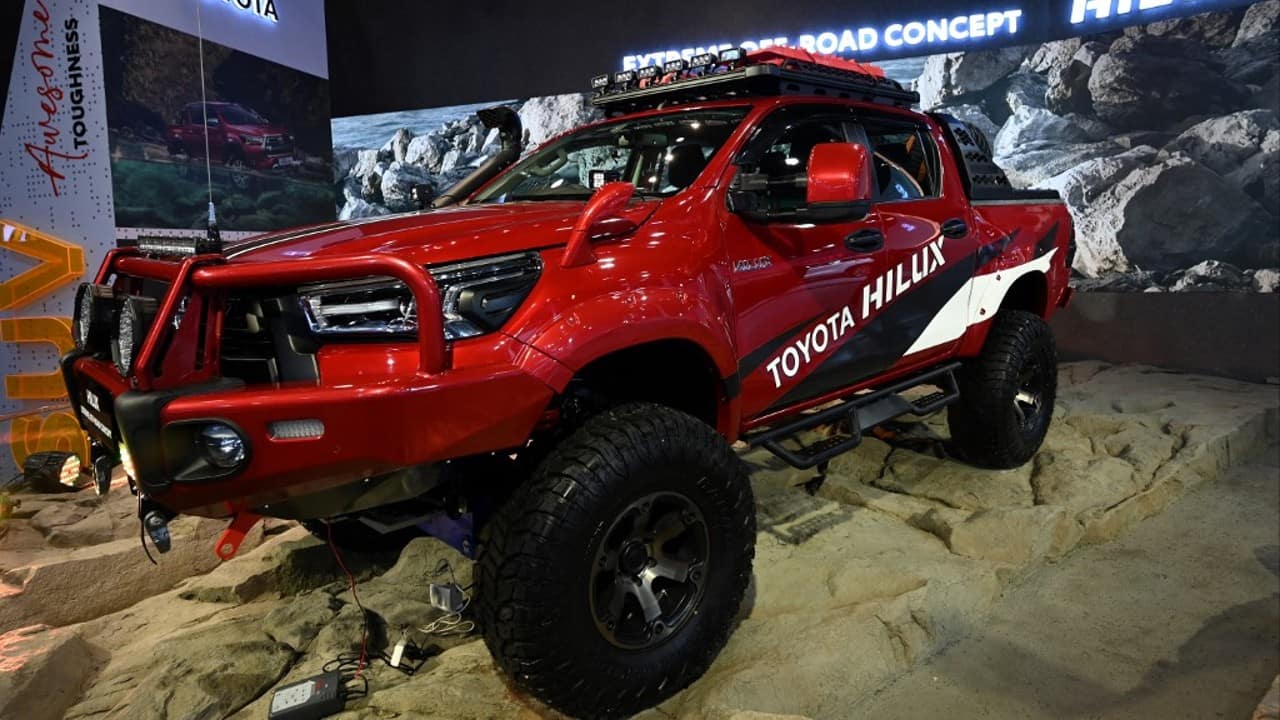
Toyota Hilux Extreme Off-road concept | The final car on this list is a pure ICE Hilux. Yes, the Hilux has already been launched in India, but if you look at the picture, you will realise this isn’t the same thing that’s on sale. The Hilux Off-road concept is built mainly with the intention of taking it, as the name suggests, off the road. The modifications on the car include a six-inch lift-kit that improves ground clearance, long-travel off-road suspension and 37-inch Radar Renegade R/T off-road tyres. Then there are the design changes; the bumper has been purpose-built for added toughness and incorporates a set of auxiliary LED lights. There is a carrier on the roof with its own set of auxiliary lights and the flatbed holds a set of spare wheels. Of course, there are no specifications available, but the stock variant that is sold in India is powered by a 2.8-litre diesel engine that produces 201 hp of power and 500 Nm of peak torque. This is then mated to a 6-speed automatic transmission, but the global Hilux also gets a 6-speed manual option. (Image: AFP)
Discover the latest Business News, Budget 2025 News, Sensex, and Nifty updates. Obtain Personal Finance insights, tax queries, and expert opinions on Moneycontrol or download the Moneycontrol App to stay updated!






